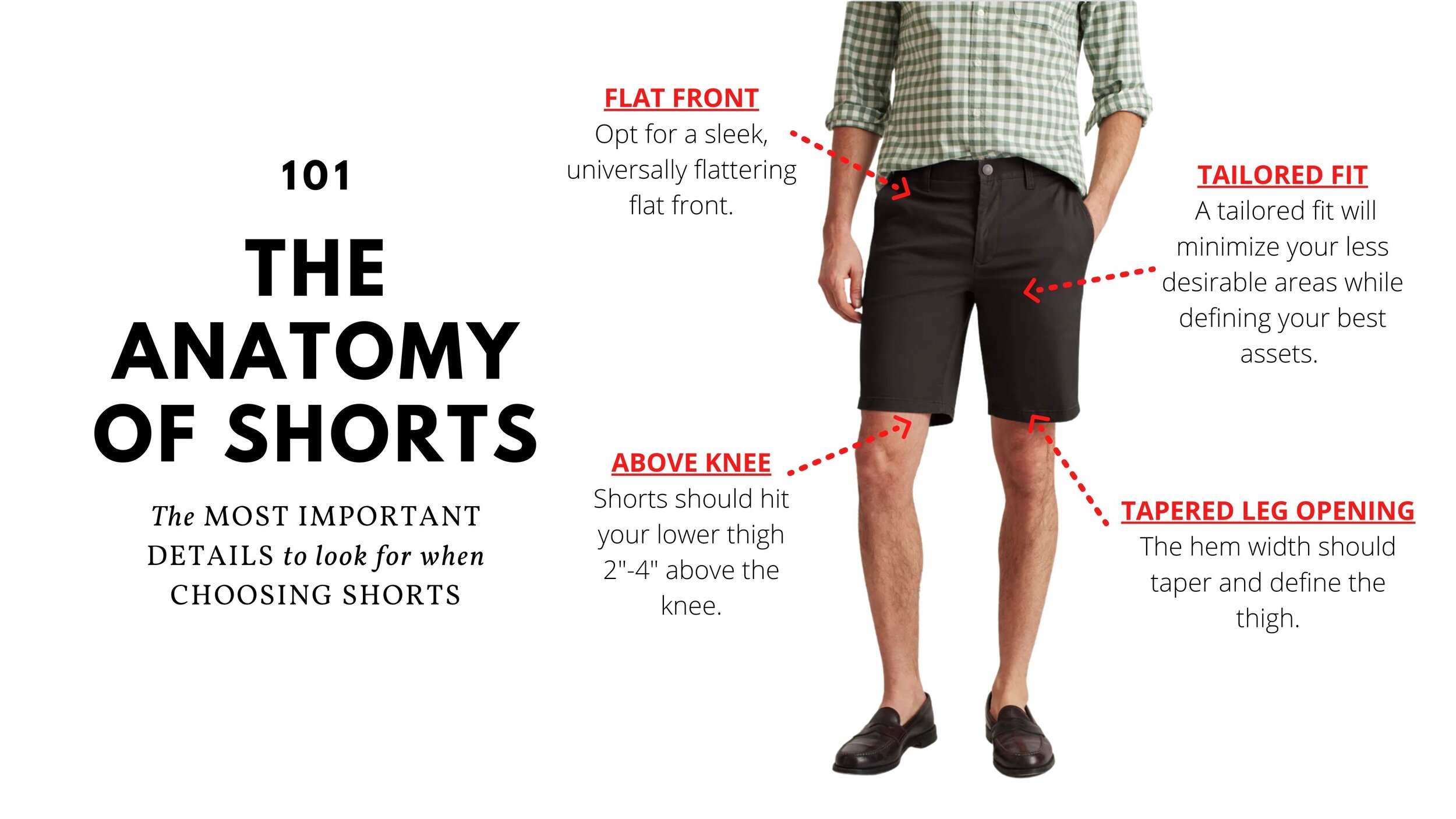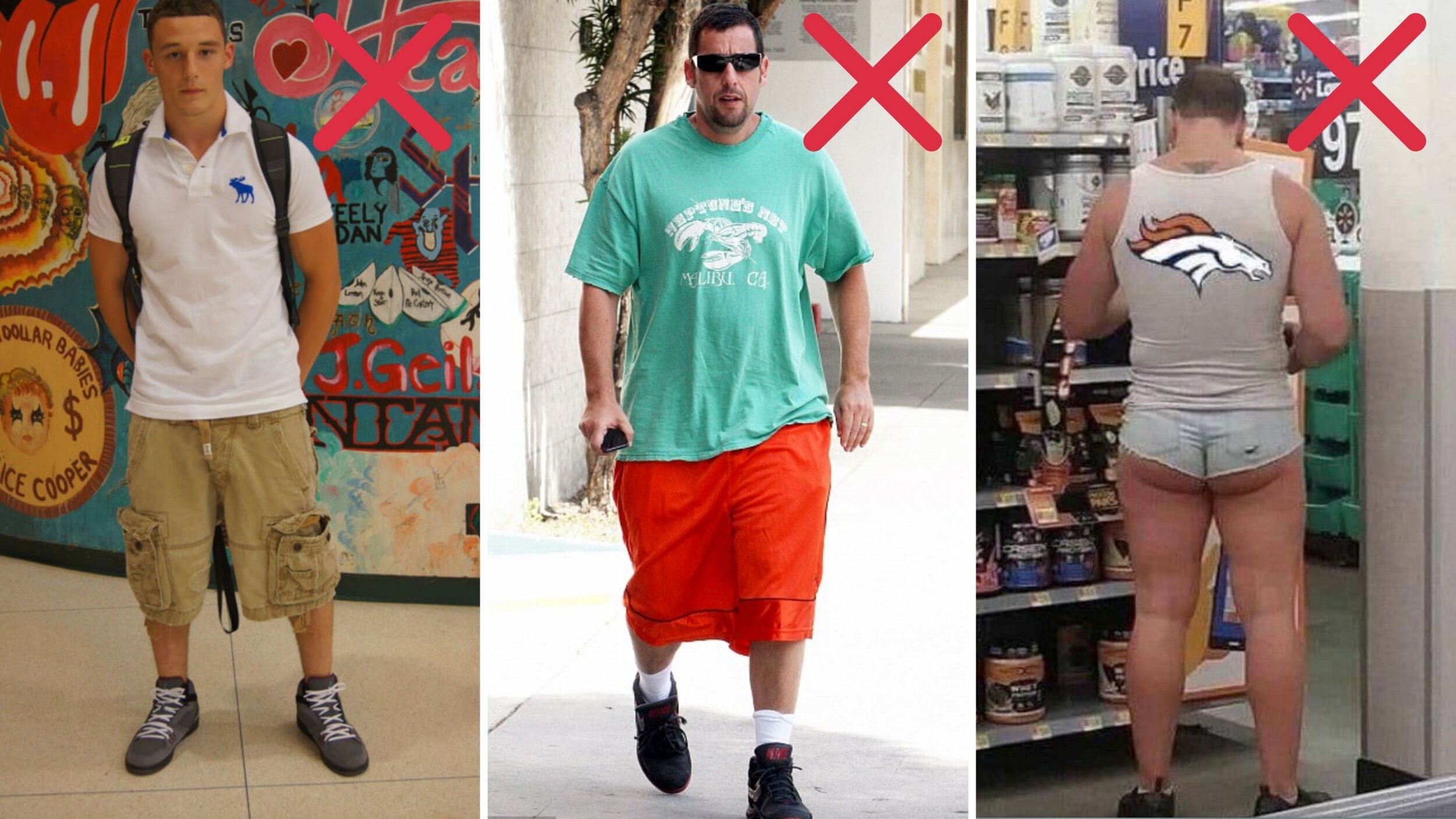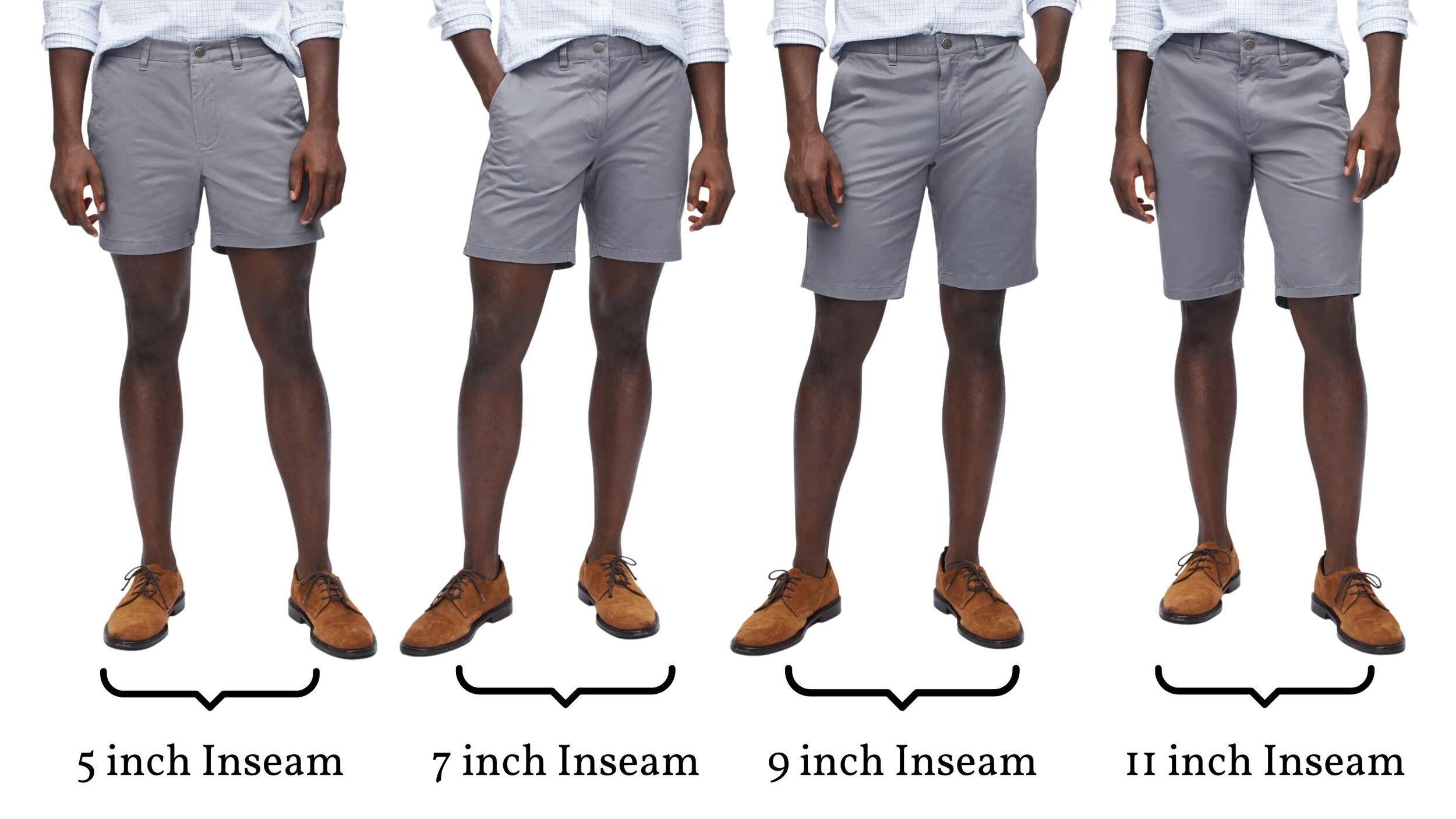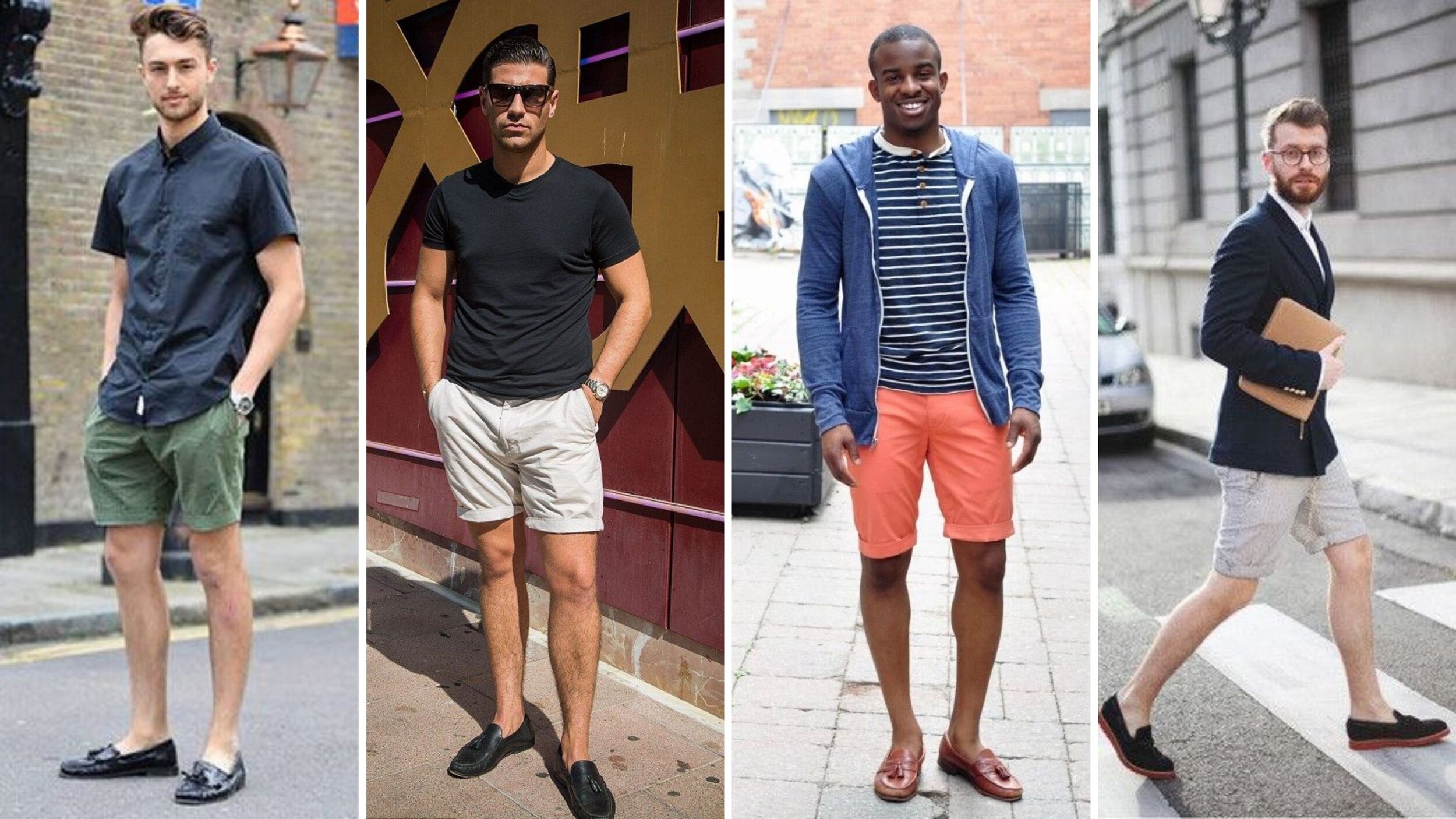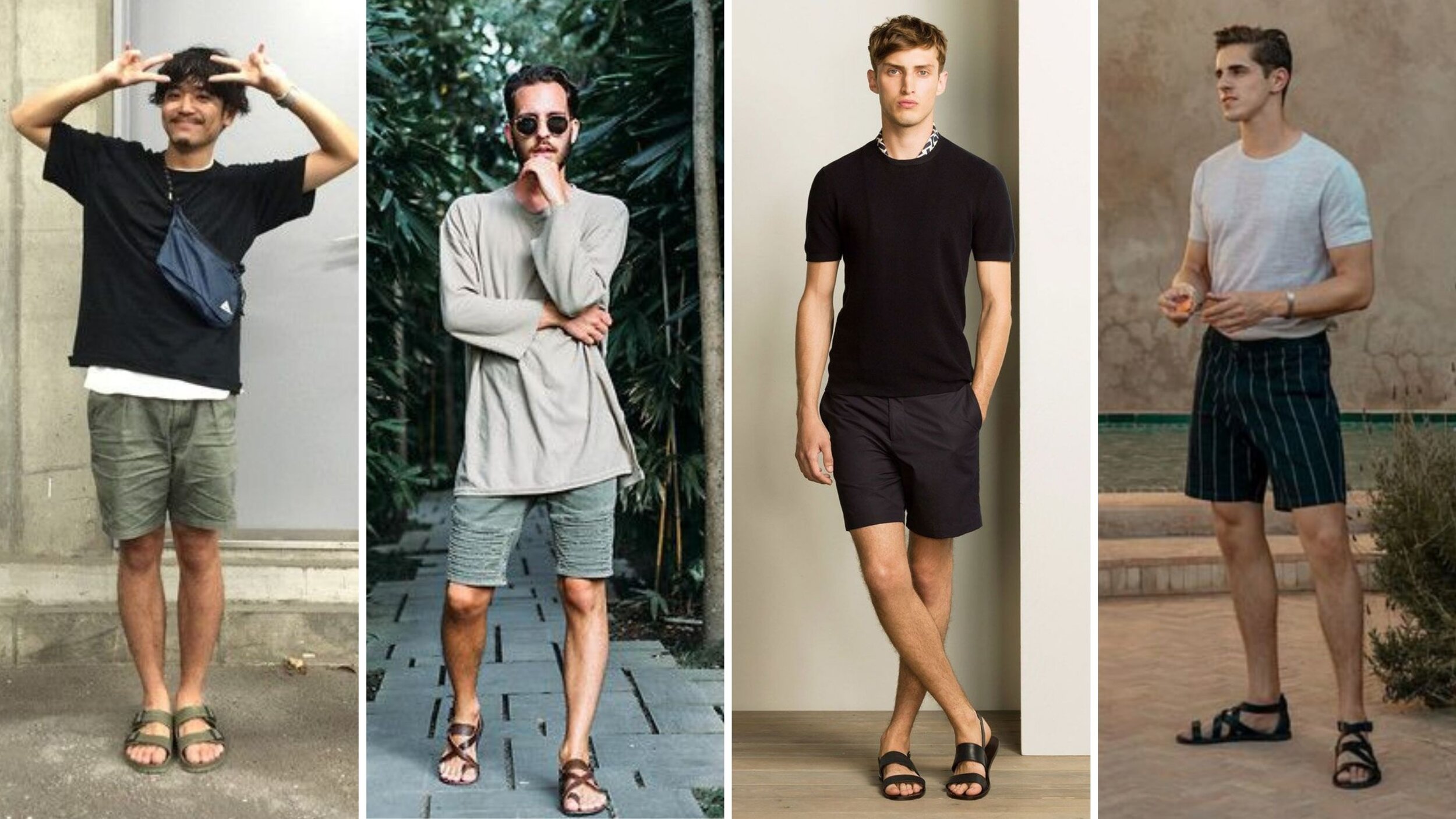The Ultimate Guide to Shorts for Men
Via Pinterest
Of all the garments in a man’s wardrobe, few are as polarizing as shorts.
At one time or another, men of all ages have questioned whether or not shorts have a place in their wardrobe.
A toxic mixture of bad advice, cultural connotations, and good old-fashioned insecurity play into the tumultuous relationship men have with what can be described as a decidedly unassuming item of clothing.
A “Short” History
Shorts are still a hotly debated and controversial topic for men due to the fact that we simply haven’t been wearing them for very long.
Sure, you might think shorts have been around for hundreds of years, but this notion couldn’t be farther from the truth.
The reality is, men have been wearing shorts—the style that we’re familiar with today—for less than 100 years. Unlike other essential clothing pieces that have stayed roughly the same for hundreds of years, modern men’s shorts—in the context of casual daily wear—remains a novel concept.
In the late 19th century and beginning of the 20th century, men experimented with cropped or “short trousers” called “knickerbockers.” These voluminous, billowy pants became a fashionable menswear trend in the 1920s and eventually adopted the moniker “plus-fours” due to their length expending four inches below the wearer’s knee.
Group of men sporting their plus-fours circa early 20th century. Via Pinterest
Despite the popularity of shortened trousers, especially with affluent elites, the style was widely associated with boy’s clothing, specifically school uniforms. Even today, I believe this association is still at the center of the shorts debate.
As with any fashion extreme, the trend fell out of favor due largely to the ultimate bummer: The Great Depression.
As we know it today, the style would remain in hibernation until after the Second World War when men had the time and money to be involved in sports and other recreational activities. Even still, wearing shorts in public wasn’t a common or widely accepted occurrence until well into the 1950s.
Between their late adoption into the modern mans’ wardrobe and the inherent boyish associations, it’s no wonder why men have a challenging time deciding when, where, and most importantly, how to wear short.
The #1 Rule of Choosing Shorts
Shorts, like pants, come in a huge variety of lengths, styles, and fits, but unlike the latter—where most men can judge the appropriate length based on their height—shorts are a bit more convoluted.
As a general rule, shorts should never, in any circumstances, extend below the knee.
Why? In short (get it?), it’s incredibly unflattering. When shorts extend past the knee, they visually cut your leg length in half, dwarfing your overall appearance. Who would want that?
As with any item of clothing, the fit should always accentuate the body in a complementary manner. Wearing ill-fitting shorts—or any unflattering garment for that matter—is quite literally doing the exact opposite of this.
The Details to Look for & Avoid
How to shop for shorts for men. Via Style Turner & Bonobos
Men today know too well the overwhelming number of shorts available in every size, shape, and color imaginable.
Sussing out the good from the bad can be an arduous task. Although your unique physique plays a role in choosing an appropriate pair of shorts, there are key details to keep in mind, regardless of body type, when deciding which pair is right for you.
Details to Look For:
Tailored Fit: Shorts should be fitted (not tight) and lovingly hug your butt and thighs. To test this, put on shorts and gently pinch the material that’s around your thigh. If you can pinch 1 inch of material, they’re perfect. Any more, they’re too loose; any less, they’re too tight.
Flat Front: Although pleats work wonderfully on trousers, shorts don’t have the same weight and drape necessary to position pleats correctly. Opt for a sleek, universally flattering flat front.
Tapered Leg Opening: The hem width should taper and define the thigh. Remember: tapered doesn’t mean tight. There should still be ample room at the hem to move and sit comfortably.
2”-4” Above Knee: In general, I find a 7” to 9” inseam to be optimal lengths for most men. This length situates the hem around 1”-4” inches above the knee (depending on your height).
Details to Avoid:
Skinny Fit: A tailored, slim fit does NOT mean skin tight. Skinny fit shorts will throw off the balance of your lower half by overly defining your thighs, butt, and waist. A tailored fit will minimize your less desirable areas while defining your best assets.
Oversized: Unless you’re going for that Paul Wall look circa 2005, avoid oversized shorts at all costs. Most of the time, these types of shorts aren’t truly even shorts; they’re gaucho pants!
Elastic Waistband: Besides just looking plain cheap, elastic waistbands hug where they may, giving no control to the wearer. Not all shorts with elastic waistbands are terrible (I own a few, myself); they’re more volatile in terms of flattery. When in doubt, go for a standard buttoned waist.
Too Many Details: The design principle, KISS (keep it simple, stupid), says it all. Avoid details like huge cargo pockets, flap pockets, or any other detail that adds unnecessary protrusion.
The worst men’s shorts. Via Pinterest
Inseam Lengths by Height
As I’ve previously mentioned, shorts should never go below the knee. Pretty simple, right? Well, yes, but there are other factors to keep in mind. One of the most important is your height. The inseam length that looks great for a short guy doesn’t always translate well to a tall guy. If you’re self-conscious about the way you look in shorts, finding, your ideal length could make all the difference.
Men’s shorts by inseam length. Via Bonobos
Short (5’8” and under)
As a short guy, you’re at an advantage in the shorts department. Short guys are less leggy and therefore have the freedom to go a tad shorter than what’s advised for their taller counterparts. A short inseam of 5” could totally work for the short guy without looking like you’re going to a disco. Use your height—or lack thereof—to your advantage!
Average (5’9” to 6’0”)
For a man of an average height, a 7” inseam is just about perfect, regardless of body type. If you’re feeling a little thigh-shy, go for the 9” inseam. Remember, feeling comfortable in what you’re wearing is THE most important part of looking your best. If you’re sporting shorts that are shorter than what you’re ultimately comfortable with, it’ll be written all over your face.
Tall (6’1 and up)
As a short guy myself, I can somewhat relate to the equal-opposite struggles of the tall man. While short guys are trying to stand out, many taller guys try their hardest to subdue their vertical dominance. To avoid showing too much thigh, tall guys (depending on your height) should go for a 10”-11” inseam. This length will provide the same visual effect as the 7” inseam on the man of average height while ensuring that your legs aren’t completely out to play—unless that’s what you’re into, of course.
Pairing Shoes with Shorts
When warm weather rolls around, one of the top questions my clients ask me is, “what shoes can I wear with shorts?”
The easiest way to decide which type of shoe to pair with shorts is to eliminate any shoes that require long socks. (And by “require”, I mean any shoes that would look odd and feel uncomfortable to wear without socks. Think boots or structured formal dress shoes like oxfords). If the shoe can be comfortably worn with or without no-show socks, they’ll work with shorts.
Option 1: Low Top Sneaker
Men wearing shorts and sneakers. Via Pinterest
I’ve said it many times before: a minimal white sneaker is your wardrobe’s best friend.
Seriously, they go with pretty much everything.
If you’re interested in a color other than white, try a muted neutral tone such as light grey. If you aren’t crazy about plain leather, go for a luxe, summer-friendly suede.
Option 2: Loafer
Men wearing shorts and loafers. Via Pinterest
Whether they’re made of leather or suede, a classic loafer will translate seamlessly in both casual and dressy occasions.
Since suede tends to be thinner and, of course, softer than leather, it’s a perfect material for summer-time footwear.
I personally love medium brown unlined suede loafers. Soft, easy to slip-on, and endlessly versatile.
Option 3: Leather Sandals
Men wearing shorts and sandals. Via Pinterest
The sandal has (thankfully) evolved beyond the disposable foam flip flops that we’ve all come to know and hate.
If you’re a sandal man, stick to thick, leather sandals that feel substantial and blur the lines between casual and formal.
When deciding which sandal is right for you, ask yourself if you’d feel comfortable wearing them to a summer wedding AND your favorite local dive bar. If the answer is yes, grab em!
What color should you buy? Go for black or brown in either smooth or full-grain leather.
Option 4: Derbies
Men wearing shorts and derby shoes. Via Pinterest
Derbies are the casual, cooler, and more approachable brother of the Oxford.
Their simplistic design, color range, and material make them a great everyday choice to pair with shorts.
I’d choose a full-grain leather in brown or a chocolatey suede.
To Sum it Up:
Shorts should never go past your knee. Regardless of height or body type, shorts should never, ever extend beyond the knee. Doing so will inevitably make you appear short, stout, and just plain silly.
A tailored fit works for everyone. Well-fitting clothing provides balance and harmony to the wearer’s body. Make sure your shorts are supporting your lower half while still allowing for a full range of motion.
Height matters. Check to make sure your shorts are appropriate for your unique height. What works for some guys may not work for others.
Choose shoes according to the need for socks. If the shoes don’t require long socks—like boots and formal dress shoes—they’ll more than likely work well with shorts.



